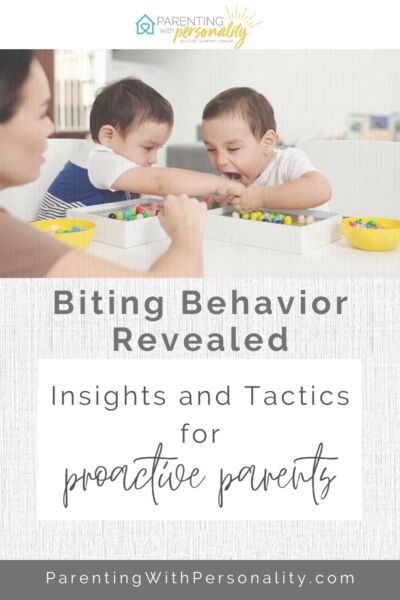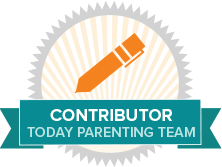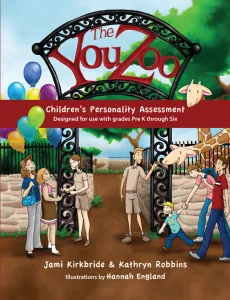Biting Behavior Revealed: Insights and Tactics for Proactive Parents
Discover why children bite and how to manage this behavior effectively. This article explores the developmental stages of biting, the reasons behind it, and strategies for prevention. Learn about the importance of early intervention, creating a safe environment, teaching alternative behaviors, and fostering connection with your child. Find out how tracking behaviors, collaborating with professionals, and seeking support can make a difference. With the right knowledge and tools, you can help your child overcome biting behavior and promote their healthy development.
Understanding Biting Behavior In Children
Biting as A Developmental Stage
Biting is a typical behavior among toddlers, and developmental research backs that up. Biting is common, with an estimated incidence rate of 25-50% in this age group. (Source: Journal of Developmental and Behavioral Pediatrics) It is often a result of their frustration with limited communication skills and undeveloped impulse control. Many parents feel a great deal of shame or guilt if their child resorts to biting, but biting is not a reflection of a child’s character or poor parenting. Rather, it is one way a young child might express anger, frustration, fear, or need for control and attention before they have the words to do so. Biting is usually a stage of development that they will outgrow with time and proper guidance.
Developmentally Inappropriate Biting
That being said, it is important to understand that sometimes, children will continue biting behavior outside of that developmental stage (beyond the age of 3) and will continue to exhibit the behavior during meltdowns, tantrums, or emotional dysregulation. This is when it becomes far more problematic, and needs to be taken seriously. In this case you will want to make sure to talk with a pediatrician, psychologist, or professional specializing in children’s behavior.
Biting that continues when a child is beyond the expected developmental stage, is a touch issue for parents, with the stigma and guilt growing immensely. So it is important for us to understand why this may occur and when it might be observed. Biting behavior may continue for a number of reasons, including the following to name a few:
- Developmental challenges: development not progressing as we would expect, delayed, or more severe issues. This could be the case, regardless of the degree to which a child is impacted by developmental challenges.
- Mental health issues: (ex: ADHD, DMDD, mood disorders, etc.) Mood disorders, such as bipolar disorder or disruptive mood dysregulation disorder (DMDD), can contribute to meltdowns and emotional dysregulation in children and adolescents. Up to 70% of individuals with mood disorders experience meltdowns, which may involve biting. Identifying and managing mood disorders through therapy and medication can help reduce the frequency and intensity of meltdowns. (Journal of Clinical Psychology)
- Autism spectrum disorder (ASD) is estimated to affect approximately 1 in 54 children in the United States. Children with ASD may engage in biting behavior due to difficulties with communication, social interaction, or sensory sensitivities. Consulting with professionals experienced in working with children on the autism spectrum can provide tailored strategies to address biting behavior in these cases.(Centers for Disease Control and Prevention)
- Executive functioning difficulties: related to impulse control and emotional control (frontal lobe) Impulsivity, a hallmark feature of ADHD and other conditions, is present in up to 70% of children with ADHD.(Child and Adolescent Psychiatric Clinics of North America) Children with impulsivity issues may have a harder time resisting the urge to bite when experiencing overwhelming emotions or frustration. It’s important to understand that addressing the underlying impulsivity can help reduce biting incidents.
- Sensory processing difficulties: related to sensory input and how the information is received, processed, and used. Sensory processing disorder affects an estimated 5-16% of children, and it can impact how a child processes and responds to sensory information. Some children may resort to biting as a way to regulate their sensory experiences or to seek sensory stimulation. Identifying and addressing sensory processing difficulties can be beneficial in managing biting behavior. (Journal of Abnormal Child Psychology)
Why Do Children Bite?
In order for us to be effective in helping our children, we must first understand why biting occurs. The following are reasons children may resort to biting (whether developmentally appropriate or inappropriate).
- Experimentation: Experimental biting is usually done by infants and toddlers as they are learning and exploring their world. They put everything in their mouths. In fact, their mouth is almost like another eye as they take in information about things. So, sometimes they bite in the process. In fact, biting is often a developmental stage or phase.
- Imitation: If a child has been bit by another child, you may find that your child decides to try it out as well. This is part of that learning, exploring, and imitating things as they develop. It is likely to pass once they see the cause and effect.
- Communication: Communicative biting may happen when a child is trying to express a need, such as hunger, thirst, fatigue, overstimulation, fear, anger, or confusion.
- Frustration: Frustration biting usually happens when young children feel frustrated and unable to cope with the situation they are in. Until they learn how to play cooperatively, You may find that they respond to the demands of other children by hitting or biting.
- Seeking attention: Attention-seeking biting happens when a child bites to see what happens (cause and effect), likes seeing a big response, or is signaling that they need attention (and doesn’t mind if it is negative or positive).
- Power Assertion: Powerless biting usually happens when a child is in need of feeling more powerful. Sometimes, we find that the youngest child in a family uses biting in an attempt to gain power.
- Sensory stimulation: Sensory related biting happens when a child is trying to satisfy a need for oral-motor stimulation, whether seeking or avoiding.
- Stress reduction: Stressful biting is usually done when a child is under a lot of emotional stress. Biting may be a sign of distress when the child is upset or angry.
- Pain: It is worthwhile to make sure there are no medical or physical reasons the child may be experiencing pain, such as teething, allergies, headaches, toothaches, etc. Often, they don’t know how to express this kind of feeling but will act out to express the pain they feel.
Understanding Your Child’s Biting Behaviors
Understanding the underlying triggers can help parents and caregivers address the behavior effectively. I encourage you to observe your child to learn where, when, and in what situations or setting they resort to biting. Pay careful attention to what happened just prior, but also trace back behaviors through the prior three or four responses you noted. That might be where you find a more accurate trigger to note. See if there are any patterns to this behavior. This is important behavior to figure out, and you may not be able to do that if you can’t find the recurring trigger or issue that tends to set this behavior off.
Tracking your child’s behaviors and biting incidents is one of the first and best things I recommend to parents. Keep a journal, calendar, or planner that can be used to specifically track the behaviors, issues, or problems that occur with your child. This is useful for many reasons, including helping you find the patterns, as well as tracing back the spiral to find triggers, and also pass information along to a co-parent, doctor, or mental health professional who is helping determine the care your child needs.
Managing and Prevention of Biting Behavior
Importance of Early Intervention
It is very important from the first biting incident that you show your child that you will take this behavior seriously. Your child needs to know and understand that biting will not be tolerated. Biting can have physical, emotional, and social consequences for both the child and others involved. Early intervention and understanding the underlying factors contributing to this behavior are crucial.
Biting can be dangerous for several reasons, especially when it occurs in a developmentally inappropriate context or involves individuals who might be considered more vulnerable. Here are some key reasons why biting is considered dangerous:
- Physical Injury: Biting can cause physical injury or harm to both the person being bitten and the individual who is biting. Bites can break the skin, leading to open skin wounds, bruising, bleeding, and even infection. The severity of injuries varies, depending on the duration of the bite, as well as they force.
- Risk of Infection: Biting can break the skin barrier, creating a pathway for bacteria from the mouth to enter the bloodstream. This increases the risk of infection, which could potentially lead to complications, if left untreated. Bacterial infections associated with human bites may include cellulitis, abscesses, and even more serious conditions like sepsis.
- Transmission of Diseases: Biting can also result in the transmission of certain infectious diseases if the person doing the biting is carrying a transmissible pathogen. Bloodborne diseases (ex: hepatitis B, hepatitis C, and HIV) can be transmitted through bites when there is exposure to blood or other body fluids.
- Psychological Impact: Biting can have significant psychological effects for both the individual who bites and the person who is bitten. It can cause emotional distress, fear, trauma, and damage to relationships. It can also lead to a breakdown of trust and safety, specifically in settings like schools, daycare centers, and most importantly, among family members in a home.
- Social and Legal Consequences: In certain situations, such as schools or day cares, biting incidents can even carry social or legal ramifications. It might even result in disciplinary action, legal intervention, or strained relationships with peers, other parents, or those in authority. And unfortunately, it can create a negative reputation and stigma surrounding the individual involved.
Considering the significant dangers associated, it’s imperative to address biting behavior promptly, and especially in cases where the biting is developmentally inappropriate and poses a risk to the well-being of others. Early intervention, preventative measures, and appropriate support can help manage and prevent biting incidents effectively.

Strategies for Preventing Biting Incidents
Preventative measures play a significant role in minimizing biting incidents. Supervision and being proactive in identifying potential triggers or situations that may lead to biting is one of the most crucial things to keep in mind. Creating a safe and structured environment by childproofing and removing potential triggers is essential. Take time to evaluate the surroundings and remove potential triggers. Establishing consistent routines and schedules helps children feel more secure and reduces the likelihood of impulsive behaviors. Be mindful that having consistent routines and schedules that help children feel safe and secure, knowing what they can expect with transitions and expectations. Transitions and times of waiting are often when children perceive less structure and problems can occur.
Tracking your child’s behaviors and triggers will help you figure out what might need to be addressed. Cutting out activities or removing objects that may tempt a child to bite is essential. Building in supports might be a measure you can take to create an environment that can help eliminate biting incidents. (For example, a child who tends to bite when wrestling or playing rough should probably avoid wrestling or playing rough.) The following is a short list of ideas that can help you prevent biting incidents with your child.
- Create a safe environment.
- Teach appropriate alternatives to biting. (see examples below)
- Encourage effective communication skills and strategies.
- Utilize visuals and social stories to support understanding.
- Offer appropriate sensory input and stimulation.
- Teach calming strategies and provide sensory breaks.
Once you understand what specific triggers your biting child has and insight into the function their biting serves, you can figure out effective alternatives to that behavior. Teaching them these alternative behaviors during the calm and regulated moments is a key strategy. Encouraging children to express their emotions through words, using positive language, and teaching them appropriate ways to communicate their emotions, and especially their anger, can help reduce frustration and biting incidents. Model gentle behavior and provide consistent and concise guidance as they practice these skills, paying close attention and offering genuine praise when you see or hear them do it well.

Appropriate Alternatives for Biting
Visuals and social stories can be useful tools in supporting their understanding and learning. As we help them develop their communication skills and strategies, we allow them to effectively express their needs and reduce frustration. See the following examples for an effective tool for each of the different reasons a child may opt for biting.
- Experimentation —> Offer many different foods that are crunchy and varying textures.
- Imitation—>Using puppets, let your child imitate ways to solve problems or ask for things.
- Communication: —>Practice different ways to communicate a need or feeling, including picture cards for help initiating the ask or expression.
- Frustration:––> Role play different ways to say “I’m angry” or “Please stop!”
- Seeking attention—->Focus on 15 minutes of 1:1 time with your child to give attention .
- Power Assertion—->Find ways to express what your child can be in charge of or give them appropriate things they can control (feeding pet, special job, helping you, etc.).
- Sensory stimulation—->Find a sensory bite or chew toy and when the child bites, substitute the tool for the inappropriate item, (make readily available on necklace or bracelet for ease of use) and offer other sensory stimulation or regulation through vestibular, proprioceptive, and tactile systems (since they are foundational systems that can strengthen other systems) as well as gustatory.
- Stress reduction—->use visuals and social stories to support their understanding and talk through things that can cause stress to help them learn appropriate ways to express what they are struggling with.
- Pain: —->visit a doctor or dentist to make sure that there are no medical or dental issues that would be causing pain or furthering biting as a means of relief for pain.
Connection- Key to Managing Biting Behavior
It is essential to remember the importance of connection and how it fosters trust and cooperation. Even more importantly, is the concept of connection before correction. Your attempts to correct a behavior will be far more effective when you have taken the time and effort to build a strong relationship with your child. So make a practice of showing them patience and understanding. Find ways that you can model empathy, active listening, and validating their emotions. Teaching your child these skills helps them understand the impact their action have on others’ feelings and encourages gentle behavior to reduce biting incidents.
Use clear and concise communication so children understand your expectations for their behavior. And in those calm moments you have together, work to build the vocabulary they need to identify, understand, and ask for help with their emotions and struggles. Model for them and train them to learn good and healthy communication. Observe and commend what behaviors they are doing well and encourage them in building that skill further. When we praise and notice good behaviors, children are motivated to do more of those good behaviors (which can be alternative behaviors to biting) and further develop self-control.
Collaboration and Team Approach
When caring for a child with challenging behaviors, such as biting, it is important to employ a strong, united team approach. Engage team parenting, caregiver cooperation, and professionals for a team approach. This can provide valuable guidance and interventions tailored to the child’s specific needs. Utilizing available resources and support networks is encouraged for parents and caregivers. It will be key that you share strategies and interventions that are effective with that child as well as offer an alert or “heads up” when extra care may be needed.
A team approach will be positively impacted with data and information that help support what happens on a daily basis with behaviors such as biting. However, I strongly encourage you to never talk about biting behaviors in front of the child. This is another reason the written tracking can be so helpful. Your child needs to know that the behavior will not be allowed and will not be a topic of conversation that yields attention of any kind.
Finding Professional Support and Resources
It will also be important for you to seek professional assistance in managing biting behavior. Therapists, behavior analysts, educators, doctors, and occupational therapists can help you design a treatment strategy that can employ various skills. Some families find that a good medication fit can help extinguish behaviors, while others find that play therapy or occupational therapy can help address the needs. Some have even found neurofeedback as a useful tool to help their child’s brain better grasp how their actions affect other people, while others have found parenting tools a missing ingredient to the parenting puzzle. Be willing to explore options and different avenues. You just might be surprised at what helps bring your child (and family) some relief!
Last but not least, don’t hesitate to find the professional support and resources that you as a parent need to navigate this difficult course. It is exhausting dealing with challenging behaviors fueled by emotion. It can feel like there’s no relief in sight. Find the support and help you need personally, even if that if finding your own counselor to listen and help problem solve with. You will struggle to help your child through their difficult journey when your own resources are running on empty. You might even find the help of an online support group useful, as you can hear from others who are in similar situations as you, have navigated beyond where you are, or are currently where you once were but have grown! All of these avenues can give you some much needed hope and help!
As you can see, there are many reasons a child might resort to biting. And while there are many tools and strategies that we can employ to curb such challenging behaviors, it will probably require at least 80% or more of your efforts being focused on proactive and preventative measures to prevent biting. Understanding and managing biting behavior requires a proactive approach. Implementing preventative measures, fostering connection, and seeking professional support when needed are key steps towards helping children overcome this challenging behavior. So don’t lose heart. I encourage you to find some healthy motivation and hope that it takes to train and nurture a high needs child. Things can be different. You can do this. I am here to help and support.
Article-At-A-Glance:
- Biting is a typical behavior among toddlers and is often a result of frustration and limited communication skills.
- Biting may continue beyond the developmental stage, indicating underlying issues that need professional attention.
- Children may bite due to experimentation, imitation, communication needs, frustration, seeking attention, power assertion, sensory stimulation, stress reduction, or pain.
- Observing your child’s behavior and tracking biting incidents can help identify triggers and patterns.
- Creating a safe environment, teaching alternative behaviors, promoting effective communication skills, and providing sensory support are strategies for preventing biting incidents.
- Building a strong connection with your child, practicing clear communication, and modeling empathy and validation are important in managing biting behavior.
- Employing a collaborative team approach and seeking professional support and resources can be beneficial for both the child and caregivers.
Biting can be a challenging behavior to address. There’s no one-size-fits-all solution, because you truly have to know and understand your child’s unique and specific needs and issues. What works for one child in curbing the aggressive behavior could be traumatic for another. Yet it is important that you take steps to protect your child, yourself, and others from the dangers of biting. Work with your child’s therapist, doctor, psychologist, or other professional to devise a plan that is good for all involved. Counselors and/or parenting coaches can be helpful in designing a plan that can bring you clarity and confidence as you handle your child with care, compassion, and consistency. They can help you figure out when to utilize different strategies such as validating, empathizing, accommodating, ignoring, startling, redirecting, and in some cases, though a last resort, restraining them from harming themselves or others (which should be done with care, caution, and calm control so as to not cause the dysregulated child to further escalate, do more harm, or be further traumatized).
If you need guidance and support to navigate this challenging course, please know I am here for you. Feel free to connect via email, messaging on social media, or through a complimentary discovery call. I’d love the chance to help you find some useful resources.
Connect today in the Parenting With Personality Group on Facebook. I’d love to answer your questions, encourage you in your parenting efforts, and provide ongoing support and strategies for your parenting adventures. I’m here to share in the challenges and celebrations along the way!
Hugs for your journey,
XXX

P.S. If you have a child who is highly sensitive, highly emotional, intense, or challenging, I want to help you discover calm, confident connection as you learn to understand their personality, emotional needs, sensory needs, and mental health issues. In fact, I have a program designed especially for you! It’s called the Calm Connection Parent Coaching Program, and you can learn about it now! We cover all kinds of challenging behaviors and intense emotions, and learn how to be most effective in helping our children learn to manage them as well! Hope to see you on the inside!
Resources for Biting:
Books–
Teeth Are Not For Biting–( https://youtu.be/Dt3e93uXm3A )
No More Biting for Billy Goat–(https://www.youtube.com/watch?v=TMRjjwUnRE8)
Burt the Beetle Doesn’t Bite– (https://www.youtube.com/watch?v=QYw9_B69IeY)
The Selfish Crocodile–(https://www.youtube.com/watch?v=0-NhjfJ_RZI)
Fun Videos–
Biting Hurts–(https://www.youtube.com/watch?v=I7F1bQh4mqw)
Being Angry and Safe–(https://www.youtube.com/watch?v=R8c_Br8I_Tc)
Don’t Bite Your Friends–(https://www.youtube.com/watch?v=U6UWNA-WQgI)











